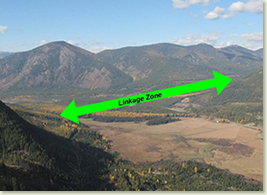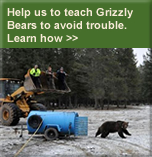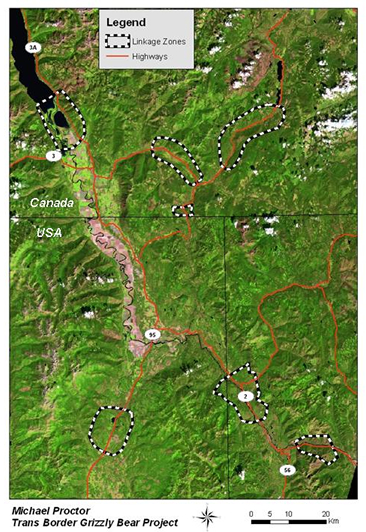
Overview
|

fragmentation & linkageHighways, settlement, and human-caused mortality have fragmented the trans-border region’s grizzly bears (Link: Proctor et al. 2005). This fragmentation may isolate small populations, a real conservation threat to be avoided. The settled Creston Valley, Kookanusa Valley, and BC Highways 3 and 3A have created the small south Purcell and south Selkirk sub-populations (Figure 2). The South Purcell sub-population contains less than 50 grizzly bears, and the South Selkirk sub-population contains less than 100 bears (Link: Proctor et al. 2007, Kasworm et al. 2009). Fragmented sub-populations that contain fewer than 100 animals have an elevated conservation risk. The good news is that a few bears are still moving between regional sub-populations. We have identified 4 linkage areas where bears prefer to cross highways and settled areas and have produced a linkage management plan that describes the problem and details our research looking for solutions. (Link: Proctor et al. 2008a - Linkage report). We are working to provide habitat security and minimize human attractants within identified linkage zones to reduce human-bear conflicts and create safe movement routes for bears. We also have a partnership with several ENGOs that are involved in purchasing or acquiring conservation easements for strategic conservation lands. To date we have protected over 500 acres of important linkage habitat along BC Hwy 3 in the S Purcells of BC in cooperation with the Nature Trust of BC, Y2Y, The Nature Conservancy Canada, and Vital Ground.
|

